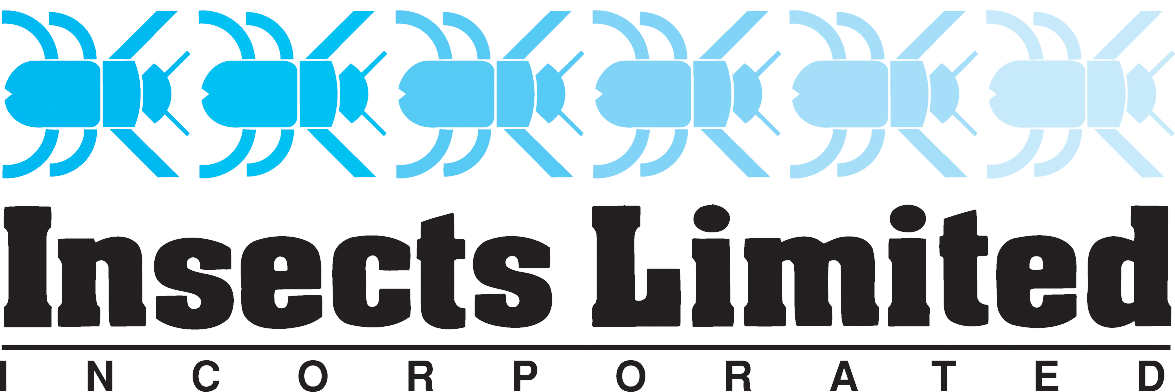Red-Legged Ham Beetle (Necrobia rufipes)
Pheromone Traps for Red-Legged Ham Beetle
Red-Legged Ham Beetle Description
Red-Legged Ham Beetle Adults: Adults are 3.5-7 mm (0.25 inch) long and metallic greenish-blue in color with red legs
Red-Legged Ham Beetle Eggs: Eggs are detectable under microscopic examination of infested items. Oval and white in color.
Red-Legged Ham Beetle Larvae: Larvae are approximately 10 mm (0.4 inches) long with dark brownish body and reddish brown head. Move relatively quickly.
Red-Legged Ham Beetle Pupae: Pupae are contained within a silken cocoon and are 3.5-7 mm (0.25 inches) long depending on where the cocoon is located. Built in cracks, crevices, holes, and fibrous or furry items.
Red-Legged Ham Beetle Life Cycle
Females red-legged ham beetles can lay up to 2000 eggs depending on temperature, humidity, and food quality. Females deposit eggs in cracks and crevices of food items to protect them from the adult beetles. Eggs hatch in 4-8 days. Larval development occurs over 35–130 days. Larvae will sometimes migrate from food sources to pupate in hidden locations. Adult red-legged ham beetles emerge from the pupa after 6-9 days. Total development time from egg to adult is 1.5- 5 months.
Red-Legged Ham Beetle Damage & Detection
Adult red-legged ham beetles move quickly and will fly in warm temperatures. Adults can be caught on blunder or pitfall traps. Meat based products, similar in moisture to beef jerky, are at most risk. Other signs of infestation are white silken cocoons on infested food items, cracks/crevices, and fibrous or furry textiles such as meaty dog treats, tennis balls, and wooden furniture. They also feed on the larvae of other insect larvae, including their own.
Red-Legged Ham Beetle Facts
Commonly confused with black-legged ham beetle (Necrobia violacea).
Other common names include copra beetle, bacon beetle, paper worm, ham and meat destroyer, ham beetle, and redlegged copra.
Red-legged ham beetles initiate flight at temperatures above 20°C (68°F).
Red-Legged Ham Beetle Monitoring Tips & Tricks
Red Legged Ham Beetle Monitoring Guidelines
Lure
The Synthetic Disc lure for the Red Legged Ham Beetle is a combination of pheromone and food attractant.
Lure Storage
Keep unopened foil pouches in cool storage less than 16°C (60°F) or place in the freezer for extended storage. Lures can remain frozen for up to 24 months or at room temperature for 12 months to retain their full effectiveness for use afterwards.
Trap Designs Used with Lure
Flat traps are low profile flat rectangular sticky traps that can be placed on level surfaces.
Red-Legged Ham Beetle Pheromone Traps
Red-Legged Ham Beetle Pheromone Trap Placement & Use
Trap Placement Techniques
Pheromone traps can be placed year-round but are especially recommended when temperatures exceed 12.5°C (55°F). Floor pheromone traps like the All Beetle Trap and Flat Trap are more effective at capturing red-legged ham beetles. In areas such as a pantry or home, place one or two traps per room.
In commercial areas, such as warehouses or retail stores, place pheromone traps 7.5– 5 m (25–50 feet) apart to determine the presence or absence of red-legged ham beetles. Increase pheromone trap density to 4.5–7.5 m (15–25 feet) apart to help locate the source of red-legged ham beetles.
Red-legged ham beetles pheromone traps are best utilized in areas that store dried meat goods such as food, animal feed, or pet food. Keep pheromone traps 7.5 m (25 feet) away from exterior doors.
Trap and Lure Maintenance
Replace traps when glue is filled with insects or becomes dusty. Replace pheromone lures every 90 days. Replace all pheromone lures in a location at the same time. Do not stagger lure replacement over several weeks. Record date and number of catches to identify trending information.
Red-Legged Ham Beetle FAQs
What do red-legged ham beetles look like?
Adult red-legged ham beetles are 3.5-7 mm (0.25 inch) long and are metallic greenish-blue in color with red legs Eggs are detectable under microscopic examination of infested items.
The eggs are oval and white in color. Larvae are approximately 10 mm (0.4 inches) long with dark brownish body and reddish brown head. The adults and larvae move relatively quickly.
Pupae are contained within a silken cocoon and are 3.5-7 mm (0.25 inches) long depending on where the cocoon is located. Built in cracks, crevices, holes, and fibrous or furry items.
How do I get rid of red-legged ham beetles?
Red-legged ham beetles feed on a range of meat-based foods. This includes hams and other dried meats as well as many types of pest foods and pet treats. The first step to get rid of red-legged ham beetles is to locate the source or sources of the infestation.
This can be done with pheromone and food-based traps designed specifically for this pest beetle. The traps that have the most larvae and adults in them are the closest ones to the source. A visual inspection of materials around the traps with the highest activity is needed to find the actual source.
Once infested products have been identified, they should be sealed off in a bag and the bag should be disposed of in an outside trash bin. If the infested products want to be kept, freezing bone and other meat material for a 1 week period, such as in these insect freezer treatment bags, should kill all stages of the insect.
What do red-legged ham beetles eat?
Red-legged ham beetles eat many meat based products, similar in moisture to beef jerky. This includes many types of pet food, pet treats and meat for human consumption.
They also feed on the larvae of other insect larvae, including their own. Signs of infestation are white silken cocoons on infested food items, cracks/crevices, and fibrous or furry textiles such as meaty dog treats, tennis balls, and wooden furniture.
Red-Legged Ham Beetle Pheromone Traps
Join Our Informed Community
Receive the latest industry updates as soon as they are published.




